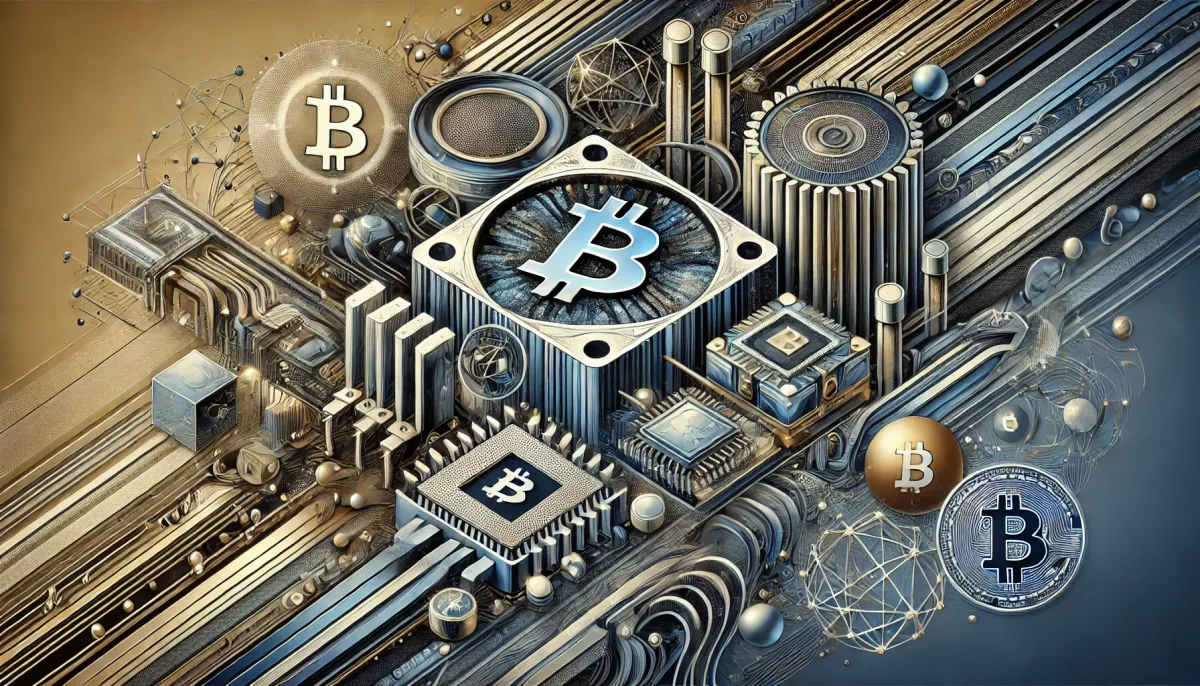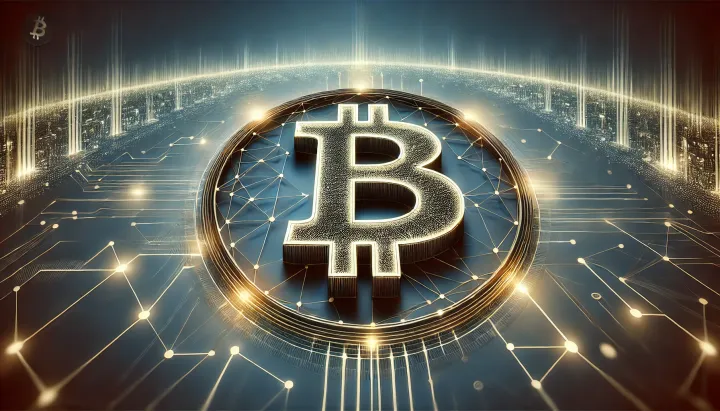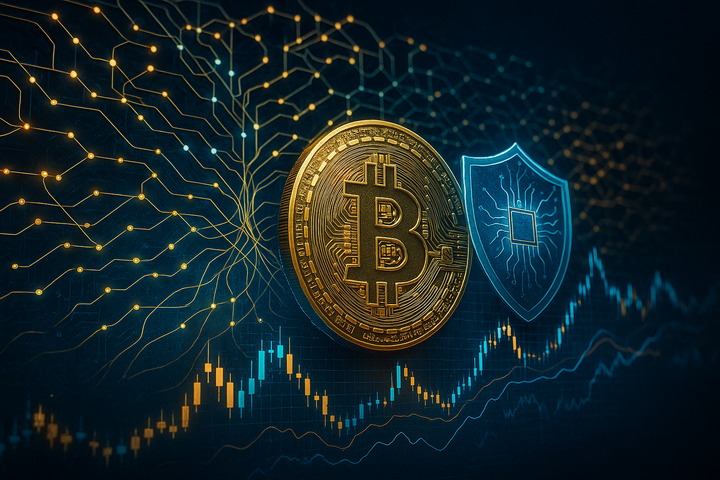Bitcoin Mining as an Energy Market Solution
The August 16, 2025 episode of the What is Money podcast features David Branscum explaining how Bitcoin mining stabilizes energy grids and monetizes wasted resources.

- My 'briefing notes' summarize the content of podcast episodes; they do not reflect my own views.
- They contain (1) a summary of podcast content, (2) potential information gaps, and (3) some speculative views on wider Bitcoin implications.
- Pay attention to broadcast dates (I often summarize older episodes)
- Some episodes I summarize may be sponsored: don't trust, verify, if the information you are looking for is to be used for decision-making.
Summary
The August 16, 2025 episode of the What is Money podcast features David Branscum explaining how Bitcoin mining stabilizes energy grids and monetizes wasted resources. He highlights immersion cooling, flare gas utilization, and flexible load response as mechanisms aligning mining with efficiency and infrastructure resilience. The discussion illustrates Bitcoin’s potential to transform energy markets, challenge fiat subsidies, and reshape debates on governance and fairness.
Take-Home Messages
- Grid Stability: Bitcoin miners curtail operations during demand spikes, reinforcing power reliability.
- Cooling Innovation: Immersion cooling enhances ASIC performance and extends equipment lifespan.
- Environmental Integration: Mining monetizes stranded or flared gas, reducing waste and emissions.
- Community Impact: Mining facilities create jobs and tax revenue but raise land use and noise concerns.
- Market Discipline: Bitcoin rewards efficient energy use while challenging fiat-driven subsidy models.
Overview
David Branscum describes how immersion cooling improves ASIC efficiency and hardware durability, enabling miners to sustain profitability under variable conditions. He frames Bitcoin mining as a driver of innovation within both hardware and energy systems. This positions Bitcoin as more than a monetary protocol, but as a force advancing technical efficiency.
He outlines how Texas miners contribute to grid stability by powering down during peak demand. This demand response capability ensures households and businesses retain access to electricity when it is most critical. Branscum presents mining as a complement to energy infrastructure rather than a competitor for scarce resources.
Mining’s ability to monetize stranded gas is presented as both an economic and environmental opportunity. Branscum argues that converting otherwise wasted resources into Bitcoin mitigates emissions while creating new revenue streams. This strengthens the case for mining as a bridge between energy producers and environmental goals.
Beyond technical contributions, Branscum situates Bitcoin within debates about fairness and responsibility. He critiques fiat subsidies for renewable energy as distortions, contrasting them with Bitcoin’s market-based incentives. By comparing Bitcoin’s fixed rules to immutable systems like physics, he underscores its resilience against manipulation.
Stakeholder Perspectives
- Bitcoin miners: Advocate mining as profitable and socially beneficial, emphasizing energy stability and flare gas use.
- Energy companies: Explore opportunities to monetize waste while managing regulatory uncertainty.
- Local communities: Value new employment but raise concerns about land use and noise.
- Regulators: Assess mining’s grid and environmental impacts while shaping oversight frameworks.
- Environmental advocates: Question whether mitigation benefits offset total energy consumption.
Implications and Future Outlook
Bitcoin mining’s role as a flexible energy consumer creates new possibilities for balancing grids and monetizing waste. If effectively integrated, miners could become long-term partners in infrastructure resilience, though unresolved local concerns may limit expansion. Public legitimacy will hinge on transparent demonstration of environmental benefits.
Innovation linked to mining, such as immersion cooling and stranded energy utilization, could spill over into data centers and other high-demand industries. These practices show how Bitcoin’s technical incentives drive cross-sector efficiency. Policymakers may need to adapt regulation to encourage beneficial adoption while safeguarding against new risks.
Bitcoin also pressures governments to reconsider fiat-driven subsidy regimes. By rewarding efficiency directly, it introduces a new benchmark for energy economics. This dynamic could reshape how states, firms, and communities allocate capital in future energy systems.
Some Key Information Gaps
- What measurable environmental benefits result from monetizing stranded gas through mining? Evidence is needed to confirm emissions reduction claims and guide policy.
- How sustainable is grid arbitrage as a business model for miners in competitive markets? Clarifying viability helps inform investor strategies and regulatory frameworks.
- Could nation-state mining lead to concentration of hash rate under government control? This raises concerns about decentralization, resilience, and geopolitical leverage.
- How might Bitcoin-driven demand for cheaper energy accelerate breakthroughs in new technologies? Research could map innovation pathways across industries.
- How does Bitcoin’s fixed ruleset redefine fairness in contrast with social narratives of privilege? Exploring this helps situate Bitcoin in broader cultural and political debates.
(also see my Bitcoin mining research questions paper, on which David was a coauthor)
Broader Implications for Bitcoin
Energy as a Strategic Asset
Bitcoin mining reframes energy as a monetizable global asset rather than a wasted liability. By converting surplus or stranded resources into economic value, it creates stronger incentives for efficiency. This could alter geopolitical competition, privileging nations and firms that optimize energy utilization.
Governance Through Rules
Bitcoin’s consensus rules represent a governance model independent of political discretion. By removing subsidies and cycles of manipulation, it challenges how states justify policy credibility. Over time, this model could influence expectations for transparency and fairness in both economic and political institutions.
Decentralized Industrial Policy
Mining demonstrates how distributed actors can fund infrastructure outside traditional planning. Facilities contribute to rural economies, grid upgrades, and job creation without centralized state coordination. This decentralized investment model raises questions about the evolving role of governments in directing industrial policy.
Technological Spillovers
Advances in immersion cooling, flare mitigation, and load balancing developed for mining are transferable to other industries. Data centers, AI processing, and manufacturing could all benefit from these innovations. Bitcoin thus operates as a catalyst for broader industrial efficiency and resilience.



Comments ()